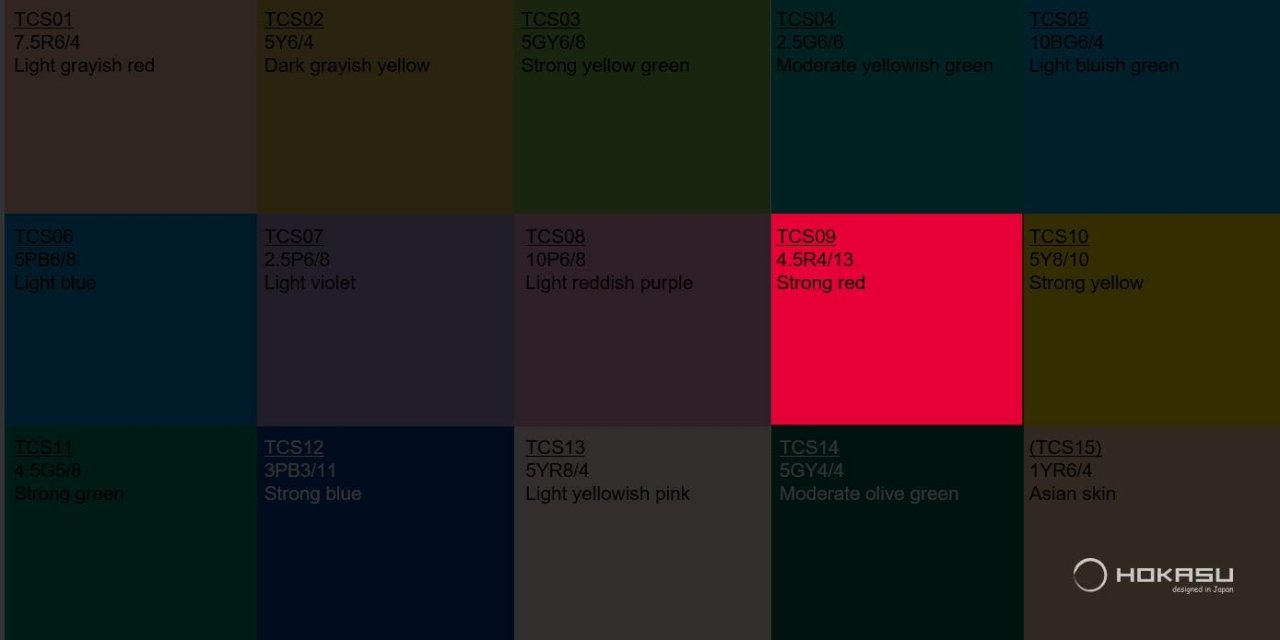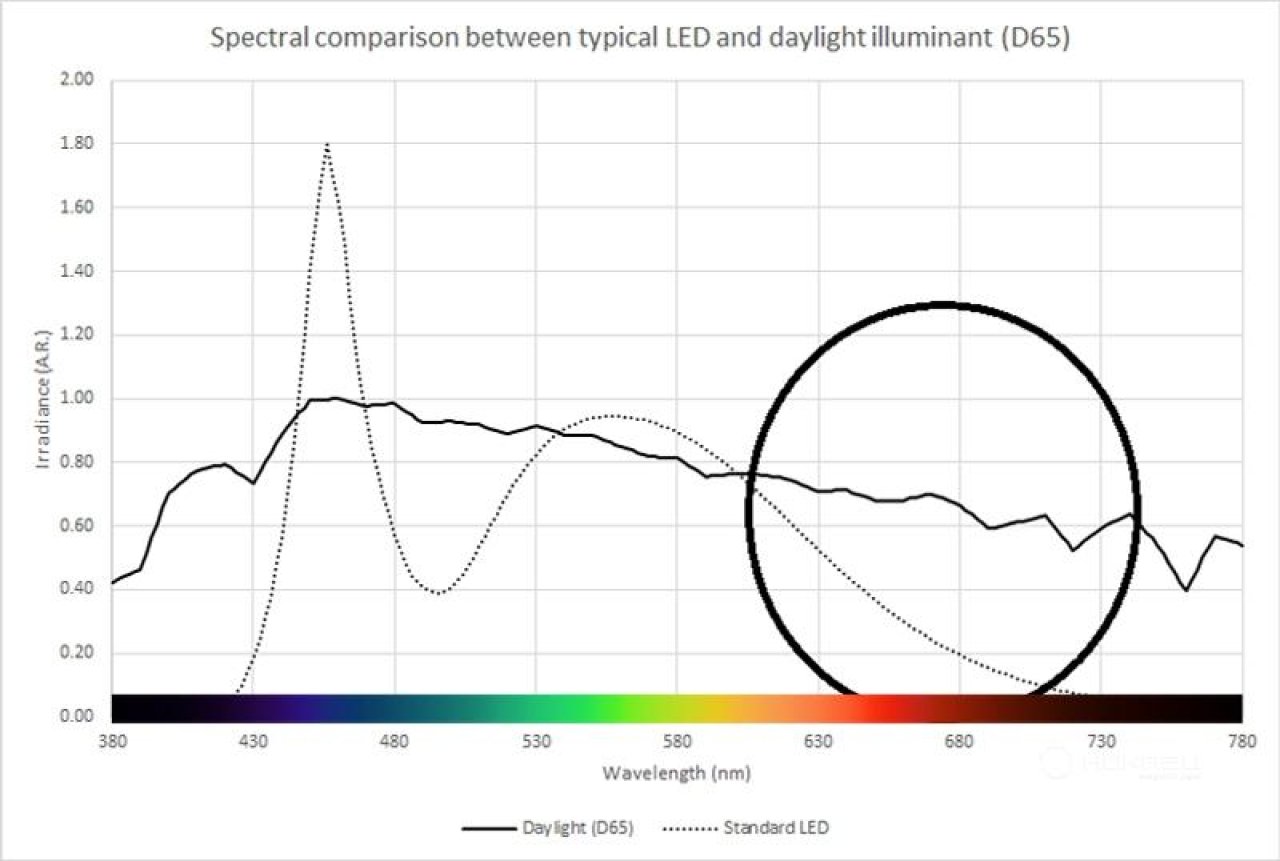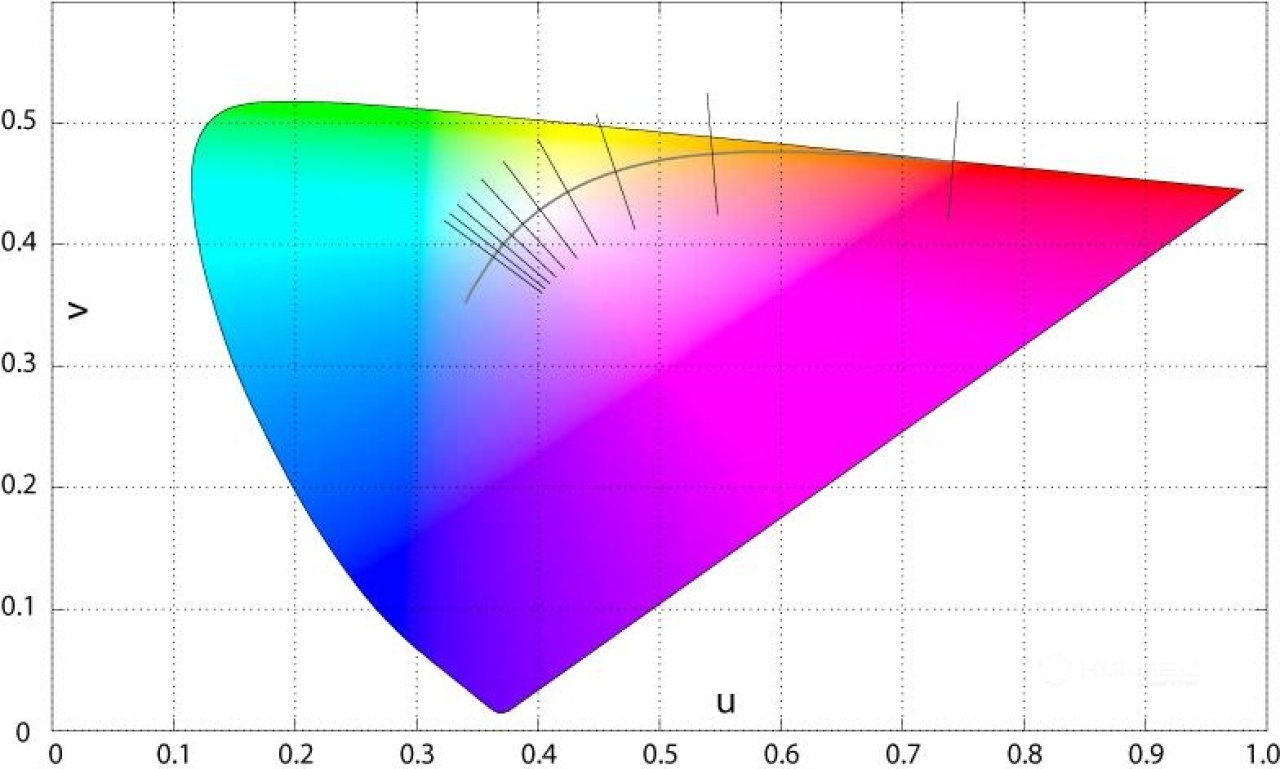Cookies are used for optimal website experience.
What is CRI R9 and why is it important?
CRI R9 is one of the color test patterns (TCS) used in calculating the extended CRI. However, many manufacturers list only the overall CRI, which does not include the CRI R9. Therefore, CRI R9 is often a useful additional indicator for evaluating a light source's color rendering ability, especially for objects whose reflectance spectra contain red wavelengths.
A closer look at how R9 is calculated, along with the appropriate color test pattern (TCS9), is a general recommendation for anyone who needs to know about the color quality of a light source.
What is CRI R9?
R9 is a measure of how accurately a light source reproduces saturated red colors. "Accuracy" is defined as the similarity to daylight or incandescent light, depending on the color temperature.


This means that if there is not enough red light in the light source, the red colors will appear "off" or different.
Below is a typical LED spectrum compared to a reference source (daylight). The absence of red light emitted by the LED at wavelengths above 600 nm is noticeable.
As a result, the CRI value of R9 for this LED is -1.4. (That's right, it's a negative number!) And that's even though the overall CRI (Ra) is 79.

Why is the CRI of the R9 important?
CRI R9 is a very important metric because many light sources do not contain red, but this fact will be hidden by averaging CRI calculations that do not include R9.
As you can see from the chart below, the light source
can actually do quite well with the first 8 color test samples, scoring quite high for R1-R8. For the overall CRI Ra metric, this means that an LED with poor red color rendering can have a CRI (Ra) rating of 80.

What should be the optimal CRI value of the R9?
Although the maximum possible value of R9 is also 100, unlike average CRI values, R9 should be evaluated somewhat differently.
Mathematically speaking, R9 is much harder to score high compared to the other R values that go into calculating CRI, and it is much more sensitive to spectrum fluctuations. Therefore, an R9 score of 50 or higher is considered "good" and an R9 score of 90 or higher is considered "excellent".
So you will find that most lights available on the market rarely specify an R9 value, and if they do, they rarely guarantee a value above 50. Even at HOKASU we specify R9 > 80 or R9 > 90, and cannot guarantee a value
above R9 > 95 because of this sensitivity.
This is because CRI uses the CIE 1960 uv color space, which is distorted in a way that exaggerates the color differences in the red region of the color chart. Since CRI is a calculation method that quantifies the color difference between a light source and a reference source, a larger calculated color difference will result in a larger decrease in the R value.

Why is the color red so important?
Red is the most important color for many applications, including photography, textiles, and the reproduction of skin tones.
Many objects that do not appear red are actually a combination of colors, including red. Skin tones, for example, are very much influenced by the red color of the blood that flows just under our skin.
Therefore, a light that lacks red will give a person a pale or even green appearance. This may not be desirable for medical applications, where the appearance of color is critical to making an accurate diagnosis. In other applications, such as photography, the aesthetic appearance is crucial and in many cases cannot be corrected even in post-processing.
When looking for an LED with high color rendering quality, be sure to know its CRI and R9 values.
04.05.2024

